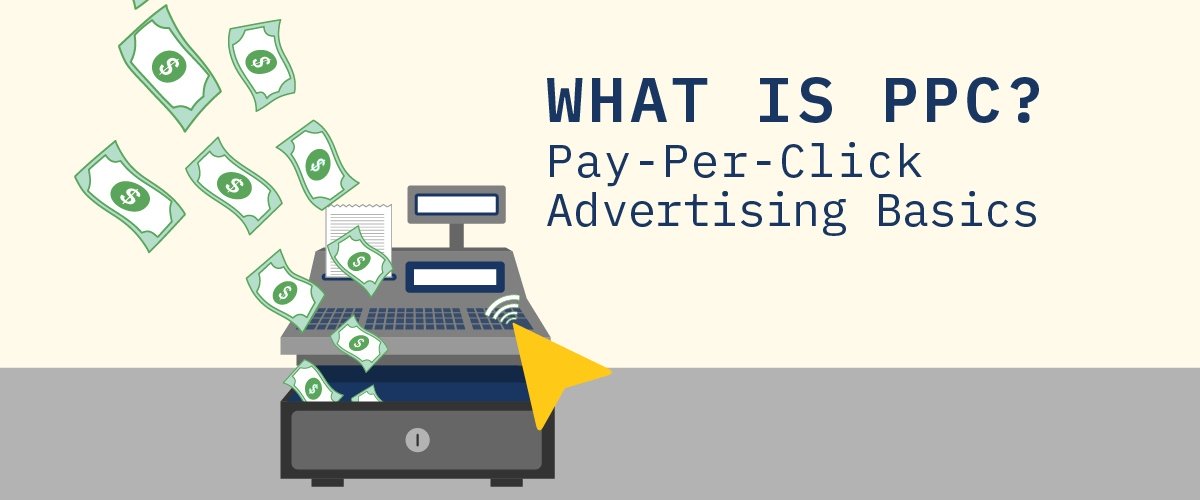Pay-per-click (PPC) marketing is an online advertising model where advertisers pay a fee every time one of their ads is clicked. It is a way of purchasing visits to a website rather than earning those visits organically. PPC is often associated with search engines, but it can also be used on a variety of platforms and websites.
Here’s how PPC typically works:
Ad placement: Advertisers bid on specific keywords or phrases relevant to their target audience. When users search for these keywords on a search engine, the advertiser’s ad may appear above or below the search results.

Ad auction: Search engines and other platforms use an ad auction system to determine the placement of ads. The auction considers factors such as bid amount, ad relevance, and landing page quality.
Cost-per-click (CPC): Advertisers pay only when someone clicks on their ad. Cost per click is determined by the bid amount and the competitiveness of the keyword.
Ad Rank: Ads are ranked based on a combination of bid amount and Quality Score. Quality Score is a metric that measures the relevance and quality of an ad and its associated landing page.
Targeting: PPC allows advertisers to target specific demographics, locations, devices, and times of day to effectively reach their desired audience.
Popular PPC platforms include:
Google Ads: The largest and most widely used PPC platform, displaying ads on the Google search engine and its ad network.
Bing Ads: Similar to Google Ads, but for the Bing search engine and its affiliate networks.
Social media platforms: Platforms like Facebook, Instagram, Twitter, and LinkedIn offer PPC advertising options to target users based on their interests, demographics, and behavior.
PPC marketing provides a way for businesses to quickly drive targeted traffic to their websites. It is a measurable and scalable form of advertising, allowing advertisers to track the performance of their campaigns and adjust accordingly.
Pay-per-click (PPC) advertising works on a bidding system, where advertisers bid on keywords relevant to their target audience. Here’s a step-by-step explanation of how PPC works:
Keyword Research:
Advertisers begin by conducting keyword research to identify words and phrases related to their products or services.
These keywords represent terms that users might use when searching for information related to what an advertiser has to offer.
Ad campaign setup:
Advertisers create PPC campaigns on platforms like Google Ads, Bing Ads, or social media platforms.
Within the campaign, they create ad groups that contain related keywords and ads.
Bid Auction:
When a user enters a search query that matches the advertiser’s chosen keyword, the bid auction is triggered.
Advertisers set a maximum bid, which represents the highest amount they are willing to pay for a click on their ad.
Ad Rank Calculation:
The ad platform uses a combination of bid amount and Quality Score to determine ad rank.
Quality Score is a metric that evaluates ad relevance, landing page quality, and the historical performance of the advertiser’s account.
Ad Placement:
Ads are ranked based on Ad Rank, and the highest-ranked ads are displayed prominently on search engine results pages (SERPs) or other advertising spaces on websites and social media platforms.
User click:
When a user clicks on an ad, the advertiser is charged a cost per click (CPC) based on the bid amount.
Landing Page:
Clicking on the ad takes the user to a landing page on the advertiser’s website, which must be relevant to the advertising content.
Conversion Tracking:
Advertisers often use conversion tracking tools to measure the effectiveness of their campaigns in terms of desired actions, such as purchases, sign-ups, or other goals.
Adjustments and Adaptations:
Advertisers regularly monitor the performance of their PPC campaigns and make adjustments to improve results.
Optimization efforts may include adjusting bids, refining ad copy, adding negative keywords, and improving landing page quality.
budget management:
Advertisers set a daily or monthly budget to control their spending on PPC advertising.
PPC advertising provides a way for businesses to reach their target audiences, drive traffic to their websites, and achieve specific goals while paying for actual clicks on their ads. The flexibility of PPC allows advertisers to control their budget, target specific demographics, and measure the return on investment (ROI) of their campaigns.


3a娛樂城
3a娛樂城
InPlay
[…] PPC […]
[…] PPC […]
[…] PPC […]
I have realized that of all varieties of insurance, health insurance coverage is the most questionable because of the conflict between the insurance company’s duty to remain afloat and the consumer’s need to have insurance coverage. Insurance companies’ commission rates on health and fitness plans are extremely low, therefore some providers struggle to earn profits. Thanks for the thoughts you share through your blog.